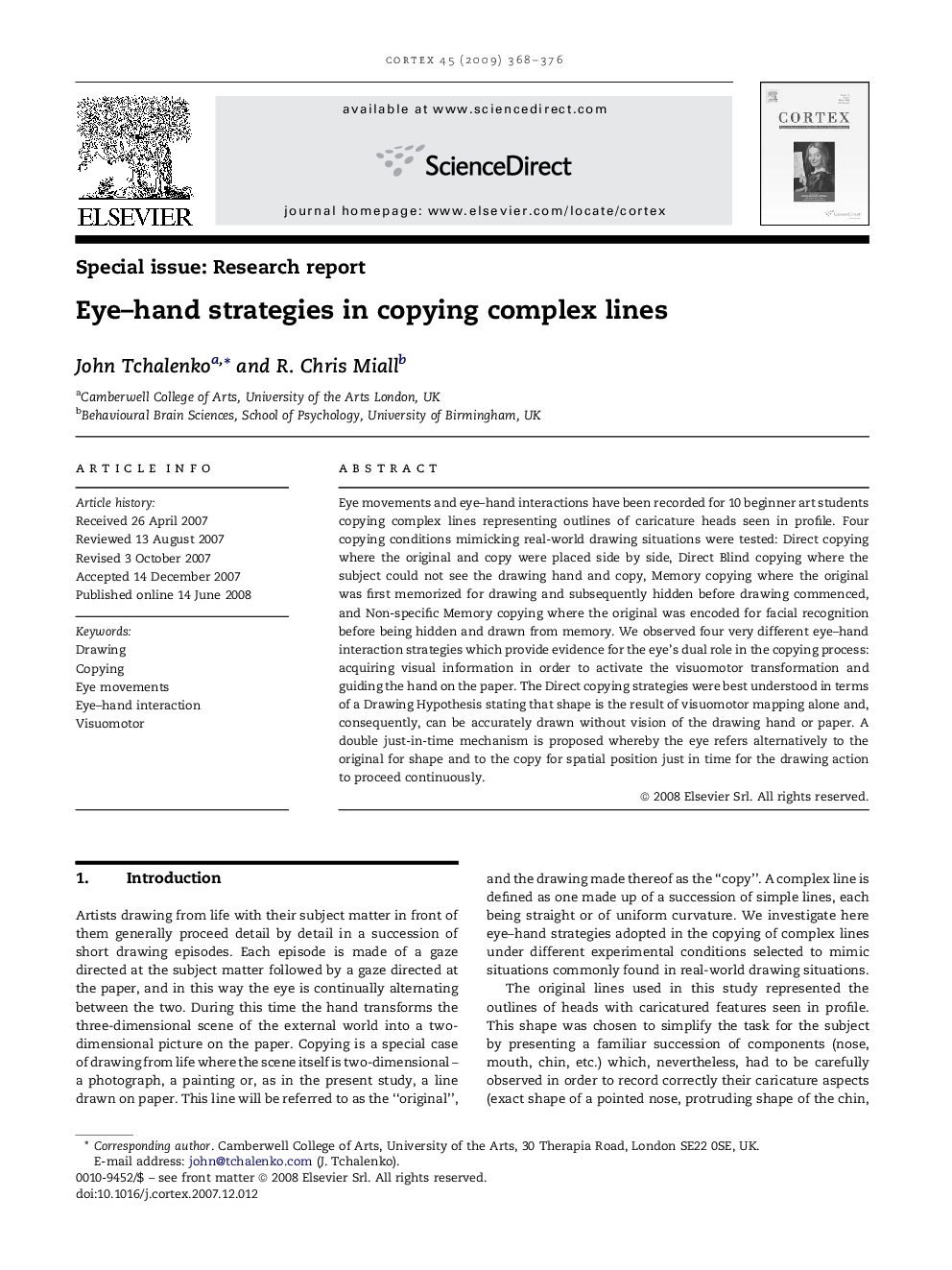| Article ID | Journal | Published Year | Pages | File Type |
|---|---|---|---|---|
| 10463383 | Cortex | 2009 | 9 Pages |
Abstract
Eye movements and eye-hand interactions have been recorded for 10 beginner art students copying complex lines representing outlines of caricature heads seen in profile. Four copying conditions mimicking real-world drawing situations were tested: Direct copying where the original and copy were placed side by side, Direct Blind copying where the subject could not see the drawing hand and copy, Memory copying where the original was first memorized for drawing and subsequently hidden before drawing commenced, and Non-specific Memory copying where the original was encoded for facial recognition before being hidden and drawn from memory. We observed four very different eye-hand interaction strategies which provide evidence for the eye's dual role in the copying process: acquiring visual information in order to activate the visuomotor transformation and guiding the hand on the paper. The Direct copying strategies were best understood in terms of a Drawing Hypothesis stating that shape is the result of visuomotor mapping alone and, consequently, can be accurately drawn without vision of the drawing hand or paper. A double just-in-time mechanism is proposed whereby the eye refers alternatively to the original for shape and to the copy for spatial position just in time for the drawing action to proceed continuously.
Related Topics
Life Sciences
Neuroscience
Behavioral Neuroscience
Authors
John Tchalenko, R. Chris Miall,
